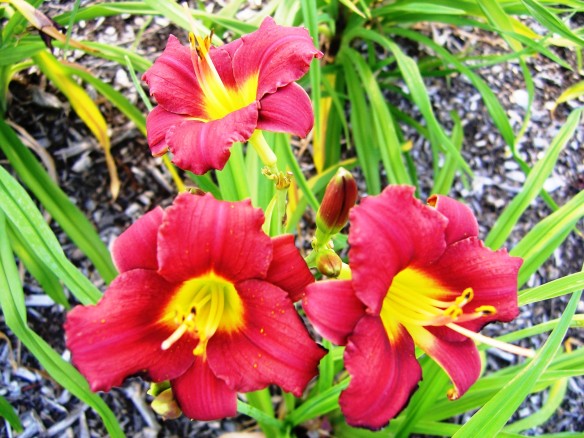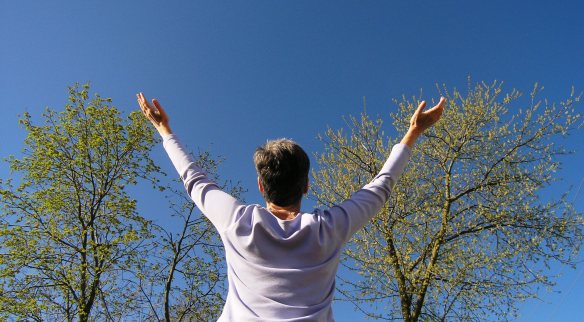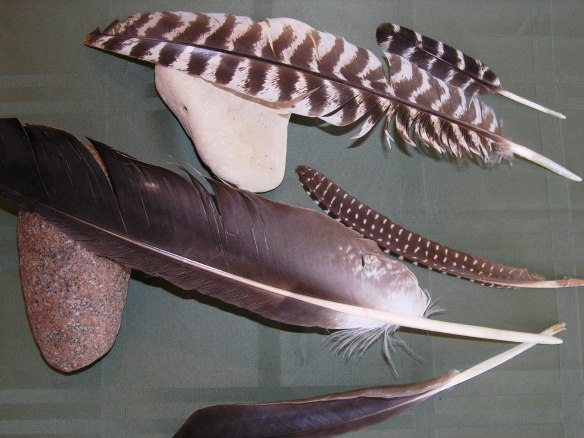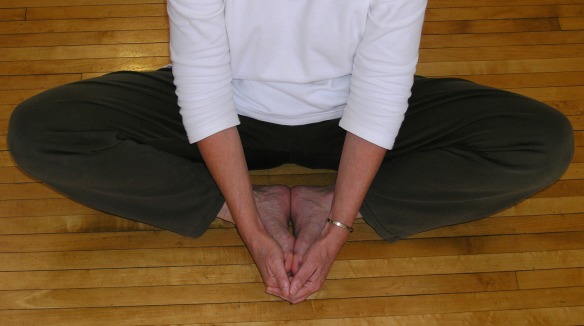
Floral Anatomy – Pistil and Stamen by Laurie Buchanan
On May 22nd we began the Energy Medicine 101 series in the University of Life. During this “course” we’ve taken a detailed look at several energy-based modalities. We started by laying the groundwork with The Language of Energy Medicine. Then we discussed the Difference between Curing and Healing, followed by a look at the Master Key to Healing, and defining the difference between Complementary, Alternative, and Integrative Medicine. Finally, we launched into eleven different energy-based modalities:
Affirmations
B.E.S.T. – Bio Energetic Synchronization Technique
BodyTalk
Breathwork
Cranial Therapy
Crystal Therapy
EFT – Emotional Freedom Techniques
Elixirs and Essences
Reflexology
Reiki
Vibrational Therapy
And while sex doesn’t technically fall into the category of an energy-based modality, it does generate a lot of energy, and it’s extremely healthy. With that in mind, here is the twelfth and final “energy-based modality” – Sex. Following, is a reprint of an article I wrote for the February 2010 edition of Mindful Metropolis magazine, Have Sex for Better Health – enjoy!
Many of us in today’s world dance a wicked two-step with a very ungracious partner named stress. Stress flings us through our days and muddles up our mind with lists of things to do, worries about the bills, potential layoffs, and the list goes on.
Countless people in relationships are stressed to the point that their times of intimacy occur much less frequently. Stress is a killer. However, it can destroy more than the body. That’s why it’s a priority to reduce stress. One of the many health benefits of sex is lower blood pressure and overall stress reduction.
Our desire for pleasure and gratification is governed by an energy center in the body known as the sacral chakra. This desire often translates to food and intimacy—specifically sex. When you’re feeling romantic, it’s a sure bet that the last thing on your mind is boosting your immune system. But having sex once or twice a week has been linked with higher levels of an antibody called immunoglobulin A, which protects you from getting colds and other infections.
Sensuality and sexuality are both part of pleasure and gratification. Many people use the terms synonymously. And while there are areas of overlap, sexuality is not the only arena for sensual expression. Sensuality is something much broader; it’s how in tune we are with our senses. Sensual perception includes the appreciation of beauty and refinement; of simplicity and the remarkable gifts of nature; the passion in creative inspiration, and the deep connection to self and others.
Sensual perception also plays a role in who we find attractive. It may not be their drop-dead smile or dreamy eyes that draw us like a magnet to another person. In his article, The Smell of Love, which appeared in Psychology Today, F. Bryant Furlow states that it is, in fact, human pheromones at work. Pheromones are naturally occurring chemical substances that trigger specific mating responses. And while pheromones have no smell or odor, they are sensed by an organ in the nasal passage—the vomeronasal organ—that sends a message to the hypothalamus and other emotional centers of the brain. These odorless compounds have a profound effect on attraction and the desire for sex.
Mood is demonstrably affected by what our senses experience. That’s why many couples combine the sensual with the sexual experience to enhance their lovemaking. This may include candlelight, a scented bath, the silky feel of satin sheets, and romantic music. Sensuality is a key ingredient for richer sexual expression, pleasure, and gratification.
Sex can enrich cardiovascular health. Whenever we feel sexually aroused, our heart and breathing rates increase. Our body does this to channel more blood to the genitals in preparation for the act of sex. But that’s not the end of it. Our brain sends a message to the adrenal glands telling them to increase the level of adrenaline in the bloodstream. As things progress toward climax, a rush of hormones is released. These include adrenaline, noradrenaline, prolactin, DHEA, and testosterone; most all of which have cardio-protective effects. Research shows that having sex twice or more per week reduces the risk of fatal heart attack in men by half, compared to men who have sex less than once a month.
A side benefit to all this “awakening” of the physical body is that it builds the strength of the heart and circulatory system. Once orgasm is achieved, both men and women release a hormone called oxytocin, appropriately hailed as “The Love Hormone.” That surge of oxytocin has many “anticlimactic” actions, just one of which is lowering blood pressure. Studies found that men in their 20s who have five or more orgasms a week reduce the risk of getting prostate cancer later in life by a third.
Oxytocin encourages the urge to nurture and bond. This may explain why many women feel the desire to cuddle after sex. The more contact there is, the higher the oxytocin levels. This is linked with the feelings of generosity, trust and interestingly, with pain relief. This is because stimulation and orgasm lead to the release of oxytocin, corticosteroids and endorphins that increase our pain thresholds, providing short-term relief with conditions such as migraines, back pain and arthritis.
Sex can improve our mood. The same endorphins that ease pain can make us feel euphoric after having sex. Along with this benefit, the release of oxytocin helps relieve tension. Oxytocin is known to be present when we are in stressful situations. People with higher levels of oxytocin are generally calmer and more relaxed than others. A study done at UCLA shows that estrogen in women enhances the calming effects of oxytocin, while testosterone may counteract it.
Sex provides many of the same benefits of exercise. Just as our body responds to a workout at the gym, sex causes our muscles to contract, our heart rate to increase, and our body to release calories and fat from storage. For many people, sexual expression is a vital piece to their core being; a celebration that oftentimes mirrors the health of their relationship. It can reflect all of the best things you and your partner share; what you enjoy and appreciate most about each other.
© TuesdaysWithLaurie.com








